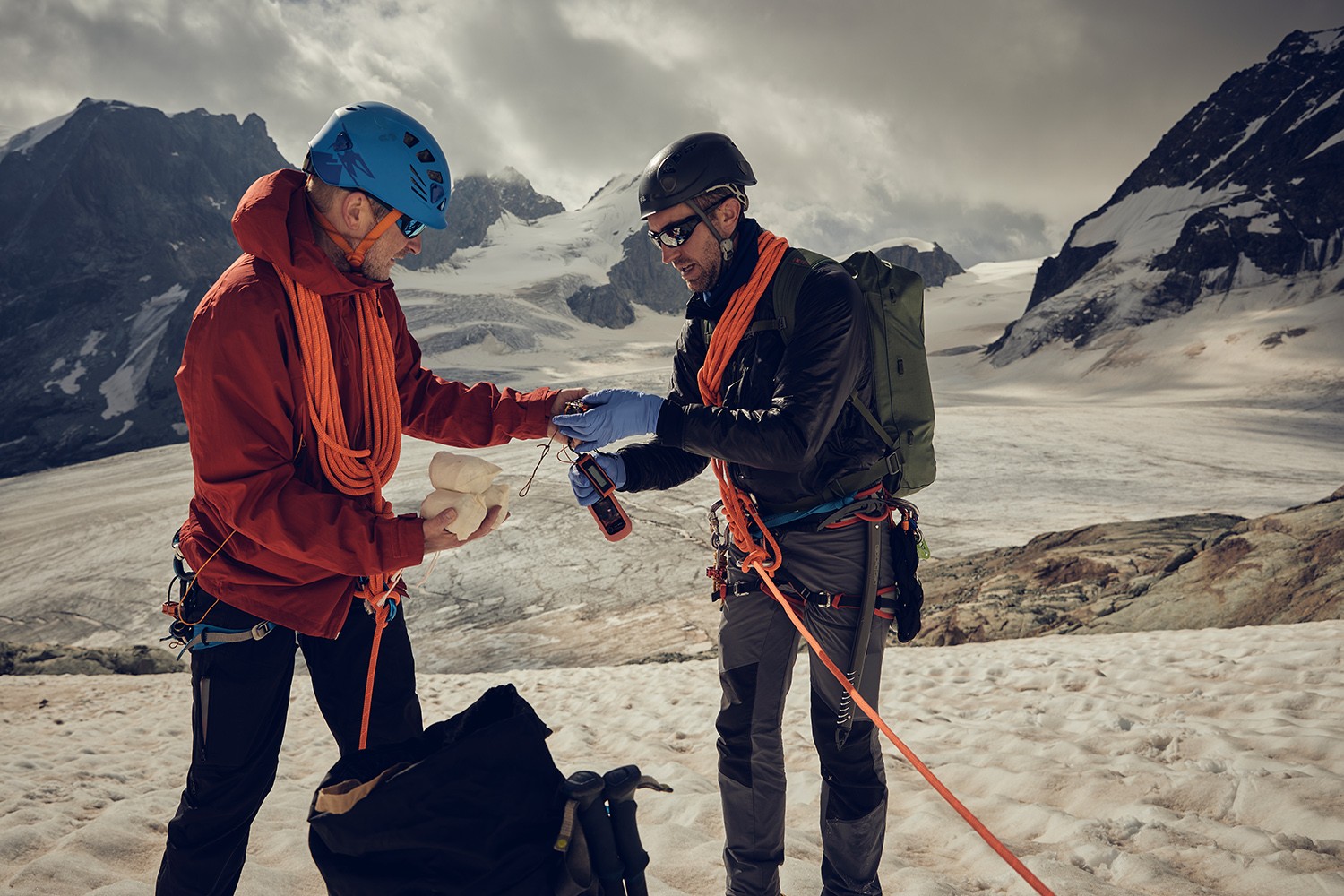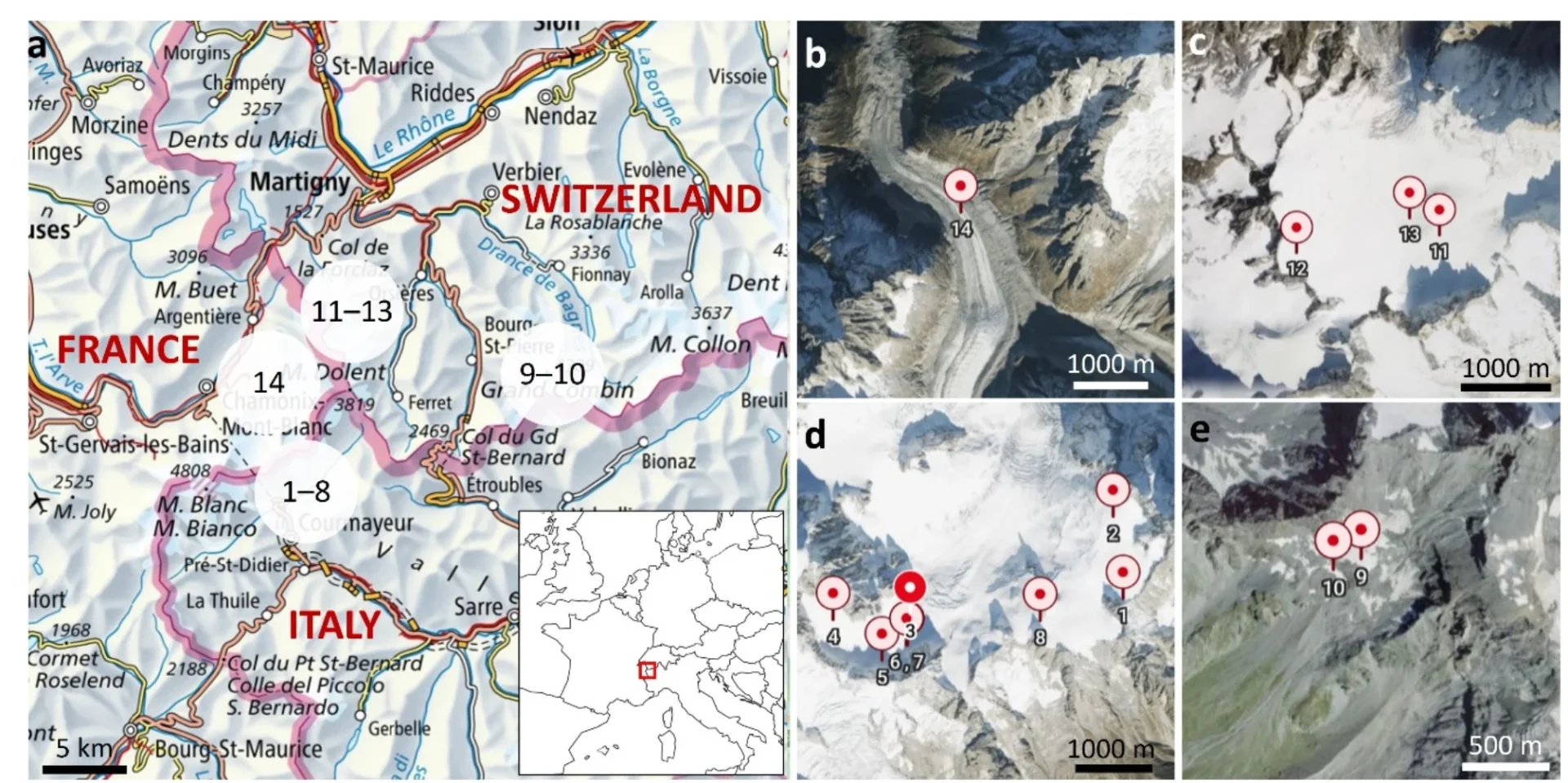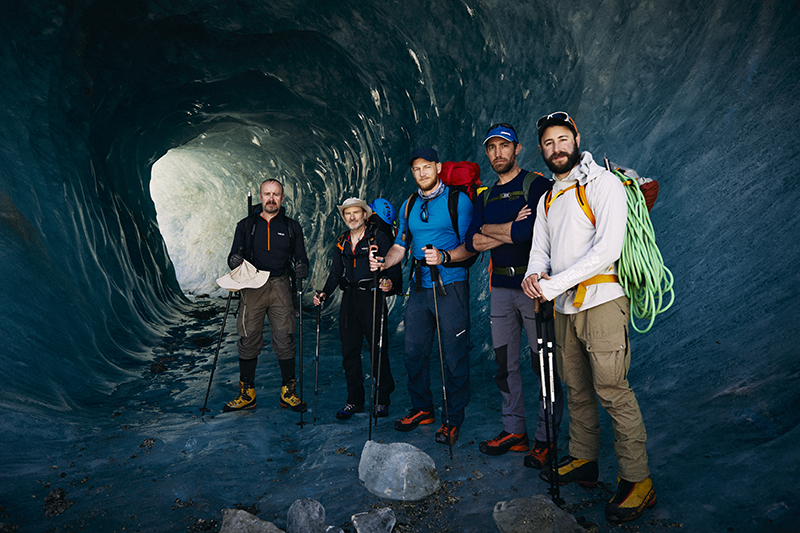
A new study has uncovered nanoplastic pollution in some of the most remote high-altitude glaciers in the Alps, raising concerns about the far-reaching impact of plastic waste. The research, published in January 2025 by a team around Dušan Materić, Head of Research Group for Microplastics, Nanoplastics and Elements at the Helmholtz Center for Environmental Research in Leipzig (‘UFZ’), Germany, used a novel “citizen science” approach, enlisting trained mountaineers to collect snow samples from isolated, nearly inaccessible locations. The findings suggest that tiny plastic particles, are being transported through the atmosphere and deposited on glaciers—areas once thought to be pristine.
Researchers analyzed particles smaller than one micrometer using an advanced mass spectrometry technique, detecting nanoplastics at five of 14 sites tested. The most common contaminants were tire wear particles (41%), polystyrene (28%), and polyethylene (12%)—materials widely used in consumer goods and industrial applications. The highest concentrations reached 80 nanograms per milliliter in some locations.
“There is a lot of macro- and microplastic in the sea. This breaks down into nanoplastic and is whirled up by waves and bubble bursting and ultimately enters the atmosphere.”
— Dušan Materić

The study highlights how nanoplastics, too small to be seen, are likely present in even the most remote parts of the world, carried by winds and deposited through rain and snowfall. Plastic pollution has previously been found in glaciers across the Andes, Himalayas, and Arctic regions, but detecting nanoplastics has been far more difficult due to their microscopic size.
By involving experienced mountaineers, researchers were able to access extreme altitudes above 3,100 meters (10,170 feet), gathering samples from areas that would otherwise be unreachable for scientific teams. The study’s authors say this crowd-sourced approach not only expands research capabilities but also raises public awareness about plastic pollution in unexpected places. Dušan Materić is aiming to expand his research into glaciers around the world. Teams of mountaineers have been collecting samples in Antarctica, New Zealand, and the Himalayas for UFZ and its laboratories are waiting to analyze the samples in upcoming studies.

The UFZ researchers worked with colleagues from Norway’s environmental research institute NILU to trace the origins of the detected nanoplastics. Using the particle dispersion model “Flexpart,” they simulated atmospheric transport, factoring in wind patterns, temperature, cloud cover, and air pressure. Their findings suggest that over half of the nanoplastics detected on Alpine glaciers came from the Atlantic Ocean, likely carried by air currents after being released from seawater through wave action and bubble bursting. On land, France contributed the largest share (over 10%), followed by Spain and Switzerland.
These results underscore the far-reaching impact of plastic pollution, demonstrating how even remote high-altitude environments are not immune to contamination carried through the atmosphere.While the long-term environmental effects of nanoplastics remain uncertain, their presence in these remote environments underscores the global scale of plastic pollution and its potential impact on fragile ecosystems.